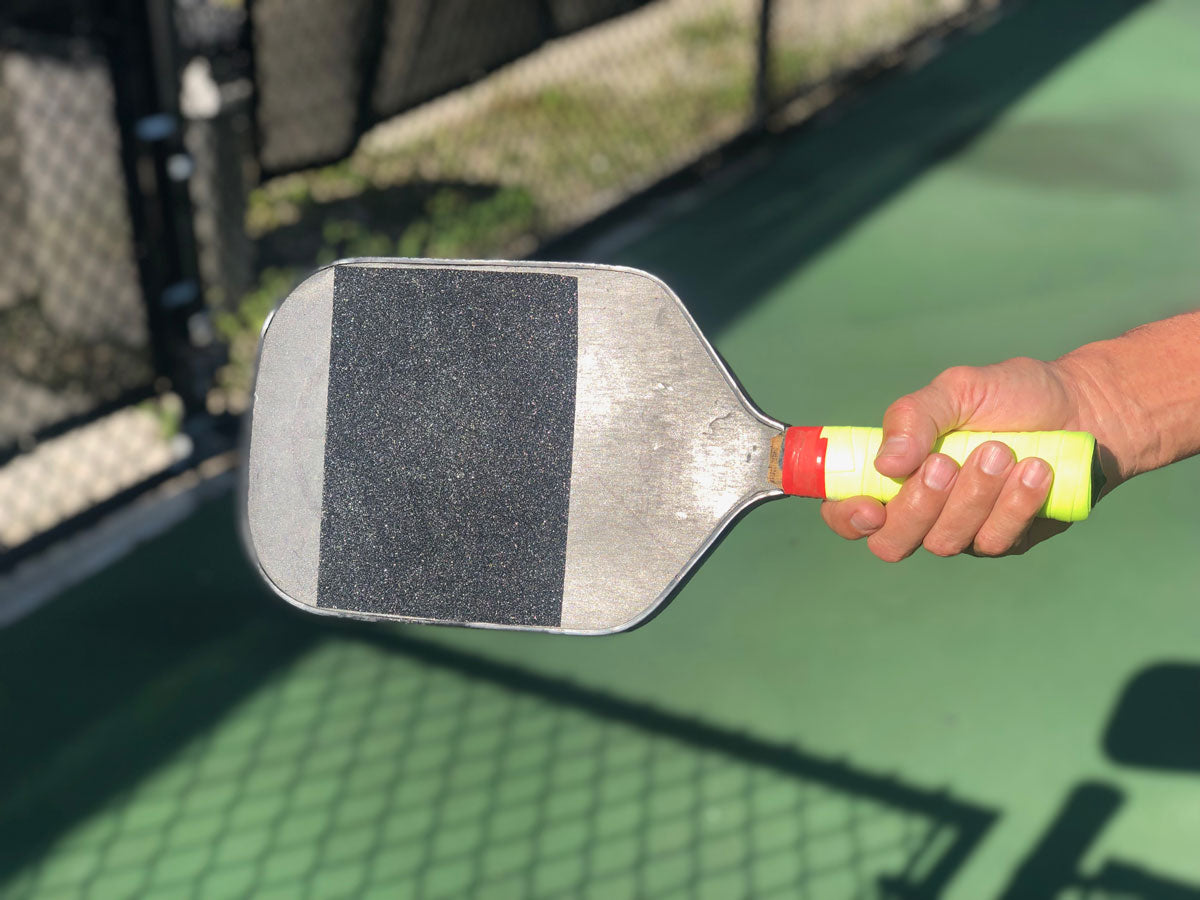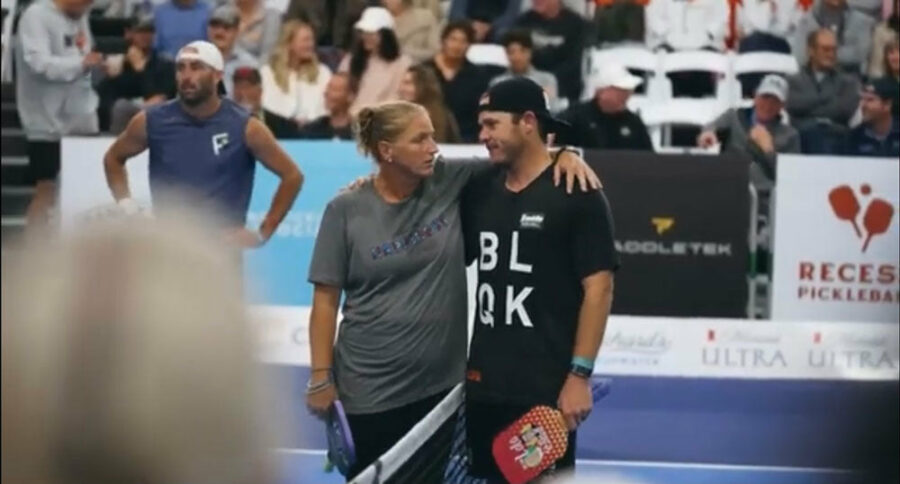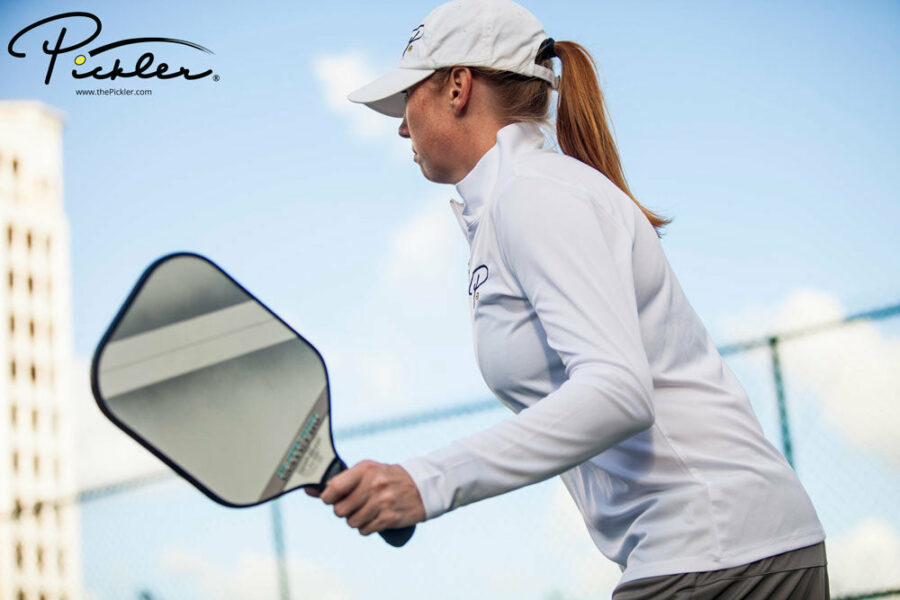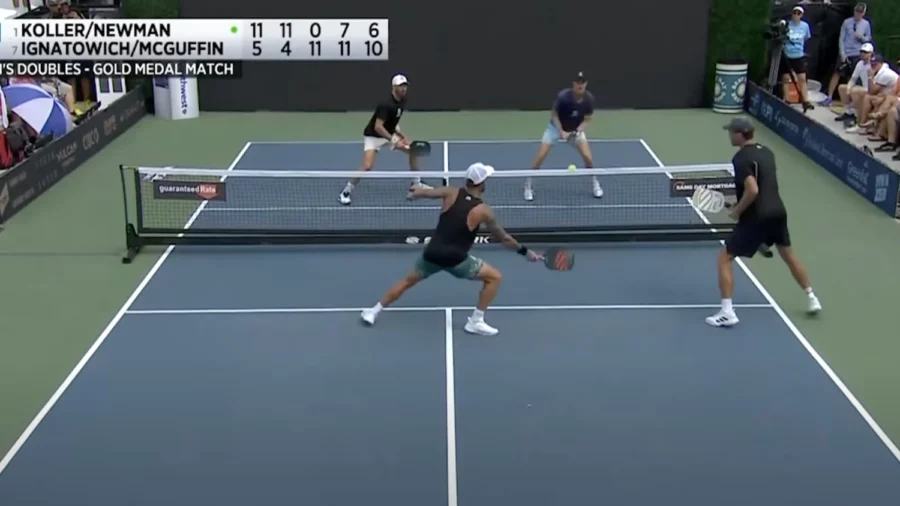Oftentimes, in recreational play, you will see players letting some rule violations “slide” from time to time on the pickleball court. For instance, you may turn a “blind eye” to an occasional foot fault that barely crossed the Kitchen line or a service fault by a player that has an illegal “sidearm serve.” You may even replay rallies with your opponents, where the official rules would call it a fault or award the rally to a certain team. However, what if the rule violations escalated? For instance, what if an opponent crashed the net and hit an overhead well within the Kitchen? Would you let the rule violation “go” in this context?
We pose this question, as an interesting scenario played out on the pickleball courts during open play recently. A veteran player showed up to open play with a new “enhancement” to his pickleball paddle. Specifically, this player added a large square of sandpaper to the middle of one side of his pickleball paddle.
According to the official rules of pickleball, this alteration is clearly prohibited. The rules provide that sandpaper characteristics are prohibited surface characteristics on a pickleball paddle. Further, to note, “[t]he only alterations or additions that may be made to a commercially made paddle are edge guard tape, lead tape, changes to the grip size or grip wrap, and name decals and/or other identification markings on the paddle face.” So, adding a strip of sandpaper to a pickleball paddle is clearly prohibited.
In fact, the player that added the strip of sandpaper knew that it was illegal, but he wanted the extra spin on his serve and other shots. When questioned about his new sandpapered paddle face, he noted that it was only recreational play, so it didn’t matter that he added the prohibited texture. (Similarly, we have heard of pickleball players adding hair spray to their paddles for similar reasons, which is also prohibited.)
With that said, do you let this paddle “enhancement” go in the spirit of open play and having fun during recreational play? Or, should everyone be required to play by the same set of rules?
Fortunately, the official rules of pickleball promulgated by USA Pickleball seemingly give us the “official” answer to this question, as the rules are meant to apply universally in all contexts of play. In other words, the rules are meant to “provide pickleball players with the rules necessary for recreational, social, organized league and tournament play.” So, the official rules of pickleball are meant to apply even in recreational play and open play.
While recreational pickleball play is generally more relaxed and meant for fun, adhering to the rules helps maintain fairness, safety, and consistency in the game. The rules are designed to ensure that all players have an equal and enjoyable experience while playing pickleball. The rules are also meant to avoid disputes on the court, which can lead to a negative atmosphere that runs contrary to the fun-spirited culture of the sport.
So, while the sandpaper addition was creative and effective, the sandpapered pickleball paddle likely went too far in breaching the rules and gave the player an unfair advantage on the court. And, while many recreational players will skirt the rules around the fringes (e.g., overlooking an occasional, marginal foot fault), this visible violation of the rules may go too far and cause controversy on the court in some circles.
If you encounter situations like this in recreational play, it may be a good idea to gently remind players of the official rules. Encouraging fair play helps to maintain a positive and enjoyable experience for everyone involved.




